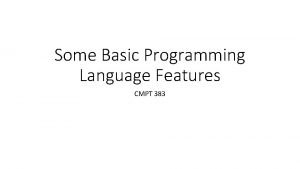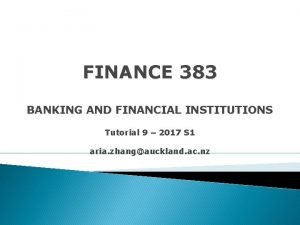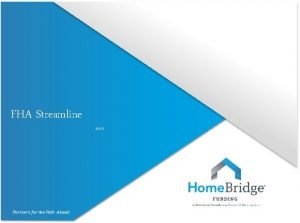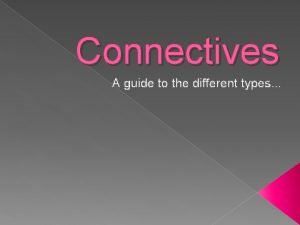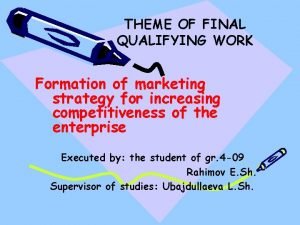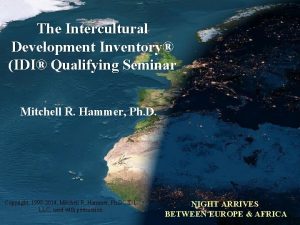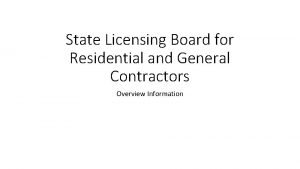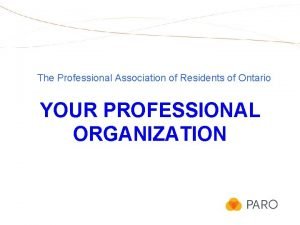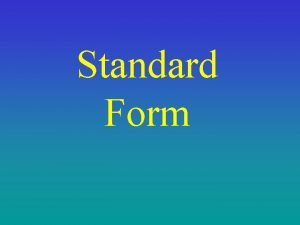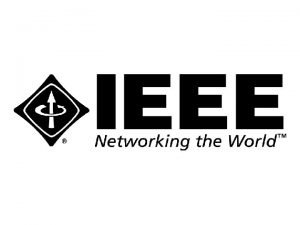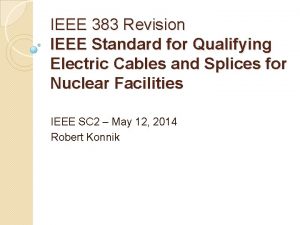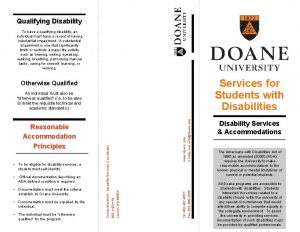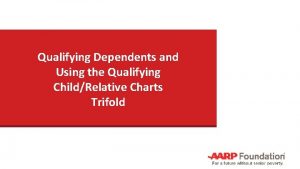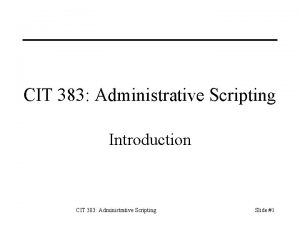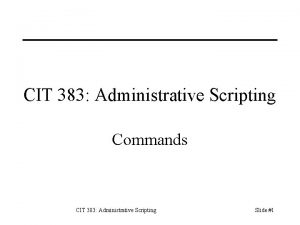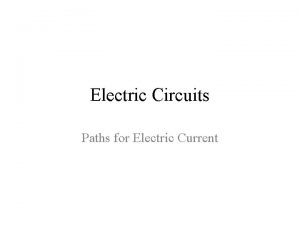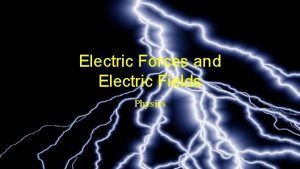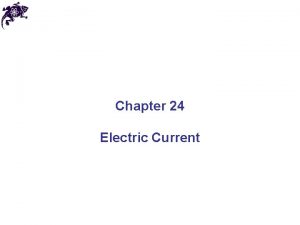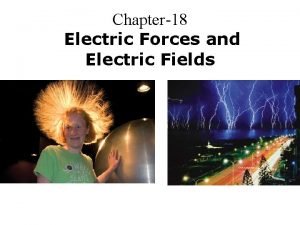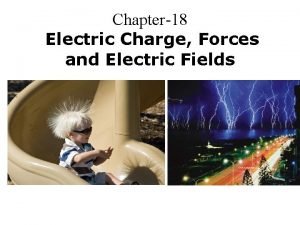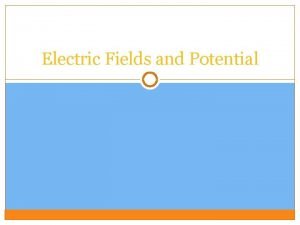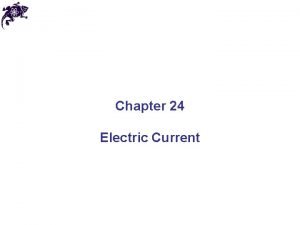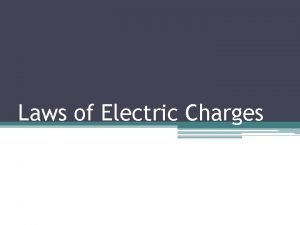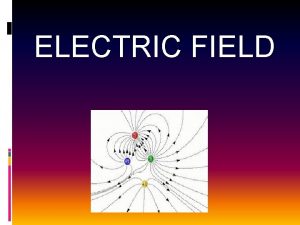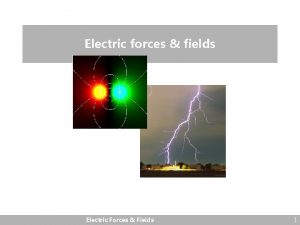IEEE 383 Revision IEEE Standard for Qualifying Electric


























- Slides: 26

IEEE 383 Revision IEEE Standard for Qualifying Electric Cables and Splices for Nuclear Facilities IEEE SC 2 – May 12, 2014 Robert Konnik

Agenda Patent Slides Status Comments

Participants, Patents, and Duty to Inform All participants in this meeting have certain obligations under the IEEE-SA Patent Policy. ◦ Participants [Note: Quoted text excerpted from IEEE-SA Standards Board Bylaws subclause 6. 2]: “Shall inform the IEEE (or cause the IEEE to be informed)” of the identity of each “holder of any potential Essential Patent Claims of which they are personally aware” if the claims are owned or controlled by the participant or the entity the participant is from, employed by, or otherwise represents “Personal awareness” means that the participant “is personally aware that the holder may have a potential Essential Patent Claim, ” even if the participant is not personally aware of the specific patents or patent claims “Should inform the IEEE (or cause the IEEE to be informed)” of the identity of “any other holders of such potential Essential Patent Claims” (that is, third parties that are not affiliated with the participant, with the participant’s employer, or with anyone else that the participant is from or otherwise represents) ◦ The above does not apply if the patent claim is already the subject of an Accepted Letter of Assurance that applies to the proposed standard(s) under consideration by this group ◦ Early identification of holders of potential Essential Patent Claims is strongly encouraged ◦ No duty to perform a patent search Slide #1

Patent Related Links All participants should be familiar with their obligations under the IEEE-SA Policies & Procedures for standards development. Patent Policy is stated in these sources: IEEE-SA Standards Boards Bylaws http: //standards. ieee. org/develop/policies/bylaws/sect 67. html#6 IEEE-SA Standards Board Operations Manual 3 http: //standards. ieee. org/develop/policies/opman/sect 6. html#6. If you have questions, contact the IEEE-SA Standards Board Patent Committee Material about the patent policy is available at Administrator at patcom@ieee. org or visit http: //standards. ieee. org/about/sasb/patcom/index. html http: //standards. ieee. org/about/sasb/patcom/materials. html This slide set is available at https: //development. standards. ieee. org/myproject/Public/mytools/mob/slideset. ppt Slide #2

Call for Potentially Essential Patents If anyone in this meeting is personally aware of the holder of any patent claims that are potentially essential to implementation of the proposed standard(s) under consideration by this group and that are not already the subject of an Accepted Letter of Assurance: ◦ Either speak up now or ◦ Provide the chair of this group with the identity of the holder(s) of any and all such claims as soon as possible or ◦ Cause an LOA to be submitted Slide #3

Other Guidelines for IEEE WG Meetings l All IEEE-SA standards meetings shall be conducted in compliance with all applicable laws, including antitrust and competition laws. l l Don’t discuss the interpretation, validity, or essentiality of patents/patent claims. Don’t discuss specific license rates, terms, or conditions. l Relative costs, including licensing costs of essential patent claims, of different technical approaches may be discussed in standards development meetings. l l Technical considerations remain primary focus Don’t discuss or engage in the fixing of product prices, allocation of customers, or division of sales markets. Don’t discuss the status or substance of ongoing or threatened litigation. Don’t be silent if inappropriate topics are discussed … do formally object. -------------------------------- See IEEE-SA Standards Board Operations Manual, clause 5. 3. 10 and “Promoting Competition and Innovation: What You Need to Know about the IEEE Standards Association's Antitrust and Competition Policy” for more details. Slide #4

Status IEEE 383 D 4 Was Sent For Comments ◦ ◦ ◦ ◦ Comments Reviewed At ICC Last Week Review These Today Preview Tomorrow NPEC in July, 2014 Ballot After That 2015 White Paper 2016+ New Revision With 323 Changes

Flame Test Delete The Following: Cables, which will be routed in air handling spaces, shall also be capable of passing the flame test of NFPA 262 with the requirements in NFPA 70 or protected per NFPA 70. Only Place With Design Information If Delete Can Still Put In Conduit & Has To Meet IEEE 1202

Conflict 6. 4. 3 Conflicts with 6. 1. 1, Revise: The insulation and jacket is assumed to be thermoset. If the materials are thermoplastic or radiation can improve the performance of the materials additional samples that have not been thermally aged or irradiated shall also be included in DBE testing. All Samples In 6. 4. 3 Are Radiated

Change All s. Samples above shall then be subjected to conditioning by radiation in air to the total integrated dose expected for the postulated DBE environment. If the materials are thermoplastic or radiation can improve the performance of the materials additional sample(s) that have not been thermally aged or irradiated shall also be included.

Splices 6. 1. 3 Modify as Follows: To qualify a multiconductor splice (i. e. , electrically interconnecting three or more conductors) similar design characteristics including representative number of conductors, functional configurations and components shall be used.

Modify 6. 4. 2 d) After the radiation exposure of [6. 4. 2 item c)], the cable samples shall be straightened (if coiled) and then coiled around a mandrel with an inside diameter not exceeding 20 times the overall cable diameter to demonstrate a lack of embrittlement and adequate flexibility.

Condition Monitoring Proposal is that the application of condition monitoring in connection with on-going qualification and extension of qualified life and the use of qualified condition as a complement to qualified life is treated in the standard. As a minimum the methods should be mentioned in the standard and if no details are given, a reference to the details in IEEE 323 -2003 should be stated.

Condition Monitoring Resolution This Has Been Discussed Many Times Before and Group Decided to Hold Until IEEE 323 Is Updated ◦ No Change ◦ IEEE 323 Already Upper Tier Document Look at in Next Revision ◦ Look At Addressing in White Paper

Annex B Request To Delete Modifications To Be Reviewed Here ◦ Change Wording So Not Mandatory ◦ Delete Duplication First 2 Paragraphs Deleted

Annex B Compounders Manufacturers may recognize the impact ingredient changes will can have on the performance of a material. These changes can may be summarized as the following. a) Name change/Supplier change with -Mmaterial generic equivalency For this benign change very little if any testing may be deemed necessary by the manufacturer if there is no change in material, process, etc. An example may be that one supplier buys another and the company name changes, but the material is made in the same place, the same way with no changes. The supplier may change the designation of a material, but not change the material, how it is made, etc. A caution is noted that even if an ingredient designation does not change, does not mean it is made in the same place, the same way, etc.

Annex B b) Change in quantity of an ingredient The manufacturer must should consider what purpose the ingredient serves in the compound and what effect the change will have on the properties. The manufacturer will determine which tests should be performed to yield the information required to decide if the material will perform at an equivalent level or better as the original formula, including Arrhenius aging and DBE performance if required. See section 10 on modifications.

Annex B c) Elimination of an ingredient previously present Ingredients that are discontinued can be: 1) Replaced with a generic equivalent. 2) Replaced with another material. 3) Eliminated from the formulation.

Annex B For the first option equivalence in composition and performance shall has to be demonstrated. See a) above. For the second option equivalent or superior performance shall has to be demonstrated. This may require complete requalification. See section 10 on modifications. In option three the manufacturer must determine if the elimination of the ingredient has diminished the performance of the qualified compound for any of its properties with regard to environmental qualification. A thorough evaluation is required to be sure some important property is not overlooked. This may require complete requalification. See section 10 on modifications.

Annex B d) Addition of an ingredient not previously present It is assumed that the addition of an ingredient is meant to enhance the properties of the nuclear qualified material. It is incumbent upon the manufacturer to determine that a deficiency is not created. A thorough evaluation is required to be sure properties are not negatively affected nor is any unexpected side effect created. This may require complete requalification. See section 10 on modifications.

Preliminary Standard For cables that need to a fire rating IEEE P 1844 Standard Test Procedure for Determining Circuit Integrity Performance of Fire Resistive Cables in Nuclear Facilities shall may be used. ◦ Can reference a preliminary standard but not ad mandatory text.

Others Add IEEE 1682 to Bibliography Reference To Withdrawn Standards (IEEE 775 and 1064). ◦ Style Manual Allows, but Cautions That Information May Be Out of Date.

General Comments Need discussion on simulating beta radiation. ◦ Said May Be More Appropriate in IEEE 323 ◦ May Address In White Paper Need discussion on requirement for physical integrity. ◦ Said Hold To Next Revision ◦ May Address In White Paper

New There may be cases of the specific application testing involving the qualification of cable or splices for application in an inert atmosphere such as used in some Boiling Water Reactor applications. The impact of the inert environment can be credited as a basis for use of aging techniques other than Arrhenius; however, justification shall be provided for the alternative technique.

Inert Atmosphere A Vacuum is Not Drawn, So Plenty Of Air Delete

QUESTIONS
 Ieee 383
Ieee 383 Active revision vs passive revision
Active revision vs passive revision Cmpt383
Cmpt383 Finance 383
Finance 383 International supervisor herbalife
International supervisor herbalife Non credit qualifying streamline loan
Non credit qualifying streamline loan Qualifying connectives
Qualifying connectives Using bird dogs when prospecting for clients refers to
Using bird dogs when prospecting for clients refers to Final qualifying work
Final qualifying work Idi assessment sample questions
Idi assessment sample questions Georgia contractors license qualifying agent
Georgia contractors license qualifying agent Lcvp qualifying subjects
Lcvp qualifying subjects Qualifying expedition aim
Qualifying expedition aim Prospecting and qualifying
Prospecting and qualifying Socialpgy
Socialpgy Standard form revision
Standard form revision Energy energy
Energy energy Potential of conductor
Potential of conductor Potential energy of capacitor
Potential energy of capacitor Electric potential and electric field
Electric potential and electric field A suitable electric pump in an electric circuit is a
A suitable electric pump in an electric circuit is a Chapter 21 electric charge and electric field
Chapter 21 electric charge and electric field Chapter 21 electric charge and electric field
Chapter 21 electric charge and electric field Electric field k constant
Electric field k constant Dc o/d per item charge
Dc o/d per item charge Electric charges and electric forces lesson outline
Electric charges and electric forces lesson outline Bluetooth standard ieee
Bluetooth standard ieee


